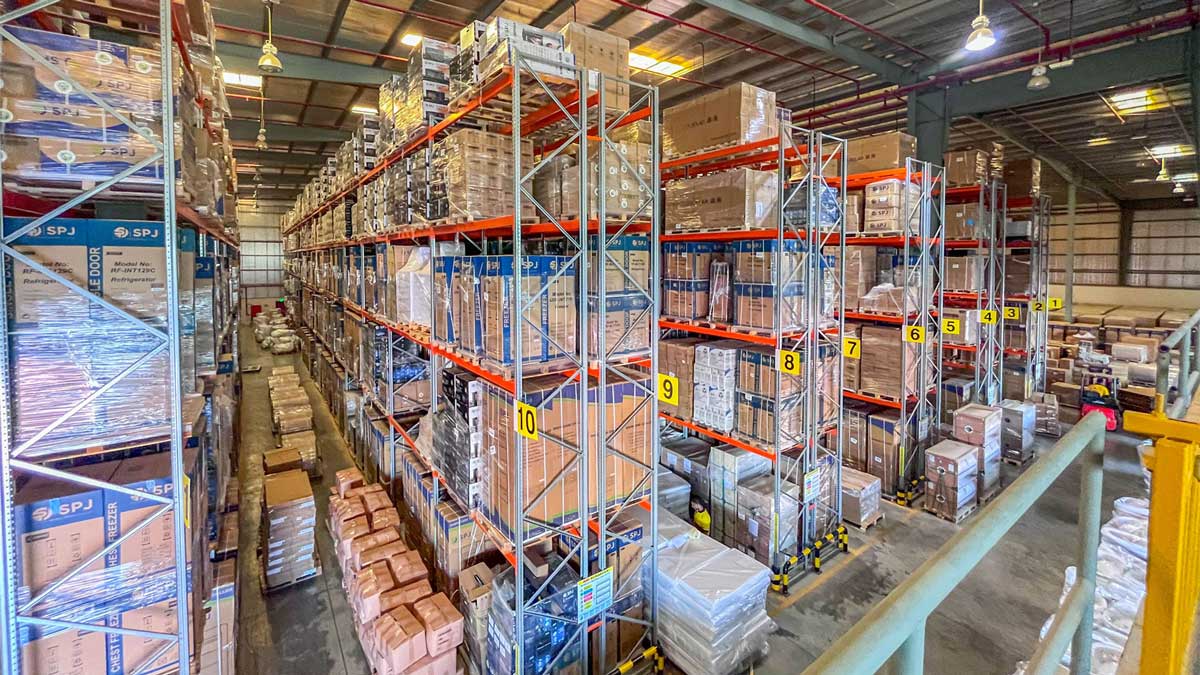
In recent years, global supply chains have faced unprecedented pressure due to shifts in the global economy, lingering effects of the COVID-19 pandemic, and various political conflicts that have significantly altered global markets while diminishing the race for additional warehousing space.
In the contemporary landscape, both in-person shopping and e-commerce seamlessly coexist, catering to customer preferences. Warehousing operations are now tasked with fulfilling orders around the clock to meet delivery commitments as short as “next hour.” Despite the myriad challenges, companies are actively seeking ways to establish supply chains that align with the rapid pace of their business, aiming for automation, predictability, customization, and speed in response to escalating customer demands.
As businesses look ahead and explore strategies for planning, the focus shifts towards comprehensive management of end-to-end warehousing, storage facilities, and inventory. This approach is crucial for addressing the challenges anticipated in 2024 and ensuring the fulfillment of customers’ expectations.
Automation
Stock Consolidation
Visibility
Sustainability
Data Optimization
What Lies Ahead for Warehousing?
Automation
This has undergone a significant transformation in the warehousing industry, reshaping operations and redefining how goods are managed, stored, and distributed in recent years. In 2024, several key automation technologies are expected to remain at the forefront, with Autonomous Mobile Robots (AMRs) taking a central role in automating fulfillment activities and improving the efficiency of order picking.
Autonomous robotic arms will see increased usage, particularly in unloading containers, reducing workplace injuries associated with depalletization, and aiding in repetitive tasks. These intelligent machines empower businesses by seamlessly transporting products within distribution centers, packing orders with precision and speed. This is achieved through advanced localization algorithms, computer or machine vision, and digital interfaces integrated with existing systems.
In the rapidly evolving omnichannel landscape, speed becomes paramount, and the rapid integration of multiple automation technologies may pose challenges for companies. However, when implemented effectively, warehouse automation promises substantial long-term benefits, proving essential to meet the escalating demands of e-commerce. This trend is expected to continue, fostering the deployment and utilization of robotic and autonomous solutions throughout the upcoming year and beyond.
Stock Consolidation
In 2024, there is a growing inclination for businesses to request warehouses to reorganize themselves to enable the consolidation of products into a single stock. While current practices often involve keeping stocks for physical retail outlets separate, sometimes in distinct buildings from those serving online shopping, the emerging trend is to merge stocks. This allows brands to fulfill orders and manage returns from a unified stockpile that caters to the various facets of their omnichannel operations.
Visibility
Is it packed? Is it shipped? The level of information that a brand must furnish to its end-consumers has increased significantly. As online ordering becomes more commonplace, consumers are increasingly experienced and expect greater transparency regarding their orders. In 2024, visibility is set to transition from being a “nice to have” to a “need to have.” This crucial information will be essential for warehouses to collect and share with their partners, including details on product returns. This enhanced visibility aims to minimize customer service inquiries, benefiting both consumers and businesses alike.
Sustainability
Amidst the current focus of businesses on devising strategies to diminish the environmental impact of their operations, there is a growing reliance on integrated logistics service providers to curtail Scope 3 carbon emissions stemming from warehousing and logistics activities. This involves the construction of new warehousing infrastructure using sustainable materials and powering it with sustainable energy sources. In the upcoming year, there will be an upswing in the utilization of emissions visibility tools by integrated logistics service providers to mitigate greenhouse gas emissions within supply chains.
This proves advantageous for businesses with ambitious decarbonization targets, facilitating progress through continuous improvement. Embracing circular economy principles, customers are actively seeking to minimize waste. Implementing circularity practices, such as utilizing reusable pallets and disposable or reusable packaging, can significantly contribute to reducing the carbon footprint within a warehouse.
Data Optimization
In 2024, an increasing number of businesses will embrace digital processes and modern warehousing operating systems. Anticipated advancements include optimization platforms facilitating simulations of existing and potential environments to elevate business operations.
A notable example is the integration of Internet of Things (IoT) devices on various machinery and other artificial intelligence (AI)-driven tools. These technologies, leveraging data, will enhance safety for forklift operators by delivering real-time safety alerts—for instance, notifying when individuals are in the path or when forklifts enter restricted zones. Data-driven digitalization will also empower equipment such as Automated Guided Vehicles (AGVs), conveyor systems, and robotic pickers to enhance precision and movement speed.
The outcome will be a seamless flow of goods from arrival to shipment, minimizing the likelihood of human error and significantly boosting overall productivity and capacity in distribution centers. Furthermore, in 2024, the adoption of data-driven decision-making, utilizing analytics and predictive maintenance for machinery and equipment, is expected to increase, contributing to reduced downtime in warehouses.
Revamping and Tailoring: Warehouses considered “outdated” by current standards will undergo retrofitting to align with the requirements of modern logistics and e-commerce operations. The upcoming year will witness a heightened emphasis on industry-specific customization, catering to the unique needs of targeted markets such as pharmaceuticals or automotive sectors. This trend of customization is expected to continue evolving in the years ahead.
What Lies Ahead for Warehousing?
For businesses on a global scale, staying abreast of the swiftly evolving technological landscape poses a considerable challenge. Thorough scrutiny of each option is essential before committing to significant investments; thus, prompting a keen focus on cost management.
To align with the imperative for faster fulfillment in the face of current challenges, 2024 is poised to witness accelerated innovations in warehousing and logistics, specifically centered around automation, enhanced data management, and decarbonization. Simultaneously, this progress will incorporate the latest safety measures and the refurbishment of older facilities, ensuring that integrated logistics flows remain smooth and resilient for future demands. Strategic partnerships with integrated logistics providers, emphasizing innovation and digitalization while prioritizing sustainability and safety, will be instrumental in facilitating this rethinking and reassessment.



